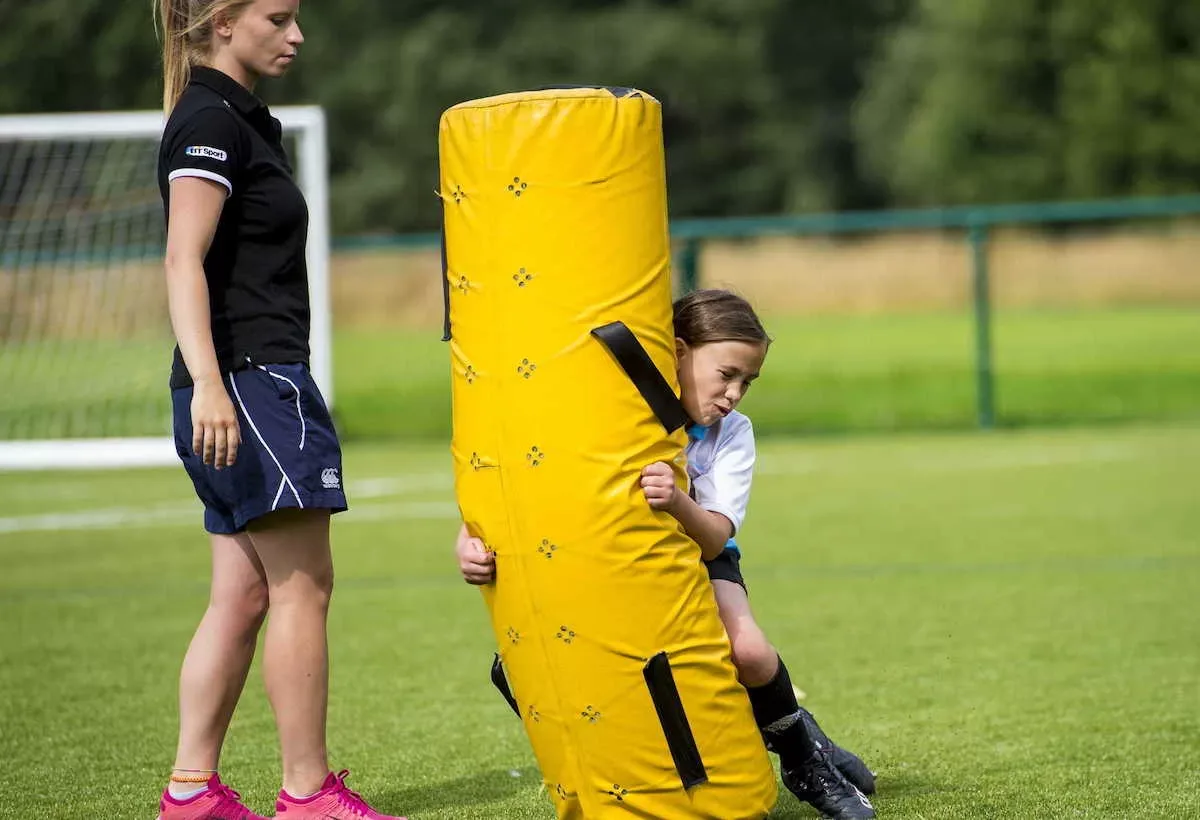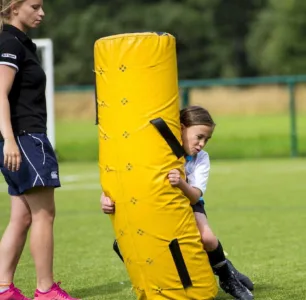Equip Your Team for Success with the Best Rugby Training Equipment
Introduction
Rugby is a physically demanding sport that requires strength, technique, and precision. To develop these skills and prepare for the challenges on the field, proper training is essential. One crucial aspect of rugby training is the use of tackle bags and pads. These training tools enable players to practice their tackling and contact skills in a controlled environment. In this comprehensive buyer’s guide, we will explore the importance of tackle bags and pads, discuss the various types available, and provide recommendations for coaches and players.
Why Are Tackle Bags and Pads Important?
Tackle bags and pads play a vital role in rugby training for both coaches and players. They offer numerous benefits that contribute to skill development, injury prevention, and overall team performance. Let’s delve into the key reasons why tackle bags and pads are essential training tools.
1. Skill Development
Tackling is a fundamental skill in rugby, and consistent practice is crucial for players to improve their technique. Tackle bags and pads provide a realistic target for players to focus on during training sessions. They allow players to practice their body position, footwork, and timing, enabling them to refine their tackling skills and build confidence on the field.
2. Safety and Injury Prevention
Contact in rugby carries inherent risks, and player safety is of paramount importance. Tackle bags and pads provide a controlled environment for players to learn proper tackling technique while minimizing the risk of injury. These training tools absorb impact, reducing the force exerted on both the player and the person being tackled. By using tackle bags and pads, coaches can ensure that players practice safe tackling methods and minimize the risk of dangerous collisions.
3. Team Cohesion and Communication
Tackle bags and pads are not only beneficial for individual skill development but also for fostering team cohesion and communication. Training sessions involving these tools often require players to work together in coordinated drills, simulating game scenarios. This collaborative environment encourages players to communicate, make split-second decisions, and develop a better understanding of their teammates’ movements and positioning.
Types of Tackle Bags
When it comes to tackle bags, there are various types available on the market, each designed to serve specific purposes. Understanding the different types will help coaches and players make informed decisions based on their training objectives. Let’s explore the most common types of tackle bags.
1. Standard Tackle Bags
Standard tackle bags are the most commonly used type in rugby training. They come in different sizes and are typically cylindrical in shape. These bags provide a stable target for players to practice their tackling technique, focusing on body position, wrap, and drive. Standard tackle bags are suitable for players of all ages and skill levels.
2. Padded Shields
Padded shields, also known as tackle shields, are versatile training tools that offer a range of uses. They are larger than standard tackle bags and feature additional padding and handles for better grip and control. Padded shields can be used for various training exercises, such as practicing tackling and rucking techniques, as well as team-based drills that require multiple players to work together.
3. Hit Shields
Hit shields, as the name suggests, are designed to withstand high-intensity impact during training sessions. They are larger and thicker than standard tackle bags and are commonly used for advanced training and conditioning drills. Hit shields help players develop power, strength, and endurance while improving their tackling technique in high-pressure situations.
4. Tackle Suits
Tackle suits are advanced training tools that simulate realistic game scenarios. They consist of multiple components, including a torso, arms, and legs, which players wear to replicate an opponent during training. Tackle suits enable players to practice tackling, grappling, and evasive skills, providing a highly dynamic and realistic training experience.
Key Factors to Consider
When purchasing tackle bags and pads, several factors should be taken into account to ensure that you choose the right equipment for your team’s needs. Consider the following key factors before making your purchase:
1. Durability and Quality
Tackle bags and pads are subjected to intense physical contact during training sessions, so durability and quality are crucial. Look for products made from high-quality materials that can withstand repeated impacts without deteriorating. Reinforced stitching and strong handles are essential features to consider, as they contribute to the overall longevity of the equipment.
2. Size and Weight
The size and weight of tackle bags and pads can vary significantly. Consider the age, size, and skill level of your players when choosing the appropriate equipment. For younger players or beginners, lighter and smaller tackle bags may be more suitable, while larger and heavier options may be necessary for advanced players or intense training sessions.
3. Portability and Storage
Tackle bags and pads should be easy to transport and store when not in use. Look for equipment that is lightweight and features convenient handles or straps for easy carrying. Additionally, consider the available storage space in your training facility to ensure that the equipment can be properly stored without taking up excessive space.
4. Safety Features
Player safety should always be a priority. Check if the tackle bags and pads have adequate padding to absorb impact effectively. Look for features like reinforced padding in high-impact areas and secure attachment points to prevent slippage during training. Equipment that complies with safety standards and regulations ensures a safer training environment for your players.
Recommended Tackle Bags and Pads
To help you navigate the wide range of tackle bags and pads available, we have compiled a list of recommended products known for their quality and performance:
- Rhino Rugby Standard Tackle Bag: This durable and well-constructed tackle bag is suitable for all skill levels. It features high-density foam and a reinforced PVC cover for enhanced durability.
- Lion Padded Shield: The Lion Padded Shield offers versatility and durability. With its strong handles and thick padding, it is an excellent choice for various training drills.
- Canterbury Club Plus Hit Shield: Designed for high-intensity training, the Canterbury Club Plus Hit Shield provides exceptional durability and impact absorption. Its ergonomic shape and padded handles ensure optimal performance.
- Rugby Factory Shop Tackle Suit: For advanced training, the Rugby Factory Shop Tackle Suit is a top choice. It offers a realistic simulation of game scenarios, allowing players to practice tackling, grappling, and evasive skills effectively.
Conclusion
In rugby, tackle bags and pads are indispensable tools for effective and safe training. They play a crucial role in skill development, injury prevention, and team cohesion. By choosing the right tackle bags and pads based on factors like durability, size, portability, and safety features, coaches and players can equip themselves for success on the field. Remember to consider the specific needs of your team when making your purchase, and always prioritize the safety and well-being of your players. Happy training!

